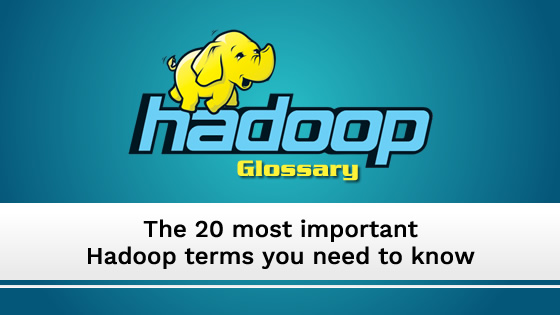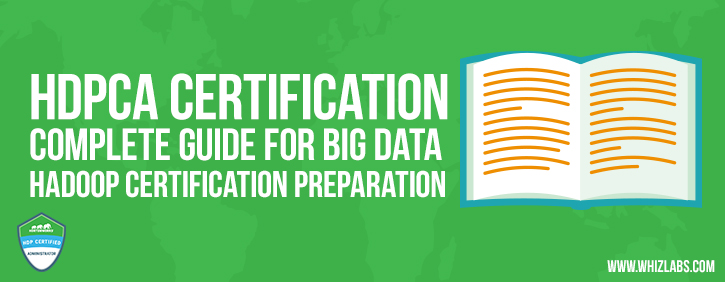Data science, big data, Hadoop, etc. are no more buzz words these days. With the increase in the amount of data generated, the need to process and analyze that Big data keeps rising. Hadoop has been used extensively to process this Big data everywhere, and in a single sentence, it has become the heart of Big data technology. Over the time it has been integrated with many other technologies. Hence, Hadoop terminologies are the broad spectrum of its ecosystem and associated tools which are expanding every day.
Not to mention, there is an increasing demand for Hadoop professionals everywhere. So, whether it is market demand or personal career upgradation is needed, knowing Hadoop has become a synonym for ‘need of the hour.’ However, if you want to explore Hadoop glossary, there are specific Hadoop terms which you must know as a Hadoop professional.
Hadoop Terminologies: Top 20 Hadoop Terms from Hadoop Glossary
1. Apache Hadoop
The primary and most fundamental Hadoop term to understand. Apache Hadoop is an open source framework written in Java that can process a huge volume of unstructured data. Hadoop is known to be a scalable and robust and fault tolerant platform. Apache designed Hadoop in such a way that you can scale up it from single servers to multiple (hundreds) machines in your network.
2. Apache Hive
Apache Hive is the infrastructure for data warehousing for Hadoop. It uses SQL queries known as Hive Query Language (HQL) to manage the data summarization. These queries are converted internally to map reduce jobs for processing.
3. Apache Oozie
Apache Oozie is the web application in Java responsible for scheduling Hadoop jobs. It works with the data storage and processing layers in the distributed ecosystem. It provides an integrated mechanism of Hadoop jobs with the administration of Oozie Workflow and Oozie Coordinator jobs.
4. Apache Pig
Apache Pig is an essential part of Hadoop terminologies. It is a data flow platform that is responsible for the execution of Map Reduce jobs. It is an extensible high-level platform that makes the programming easy and helps in optimizing the execution. Pig scripts are converted into Map Reduce jobs and then executed on HDFS data.
Want to validate your Hadoop skills? Here are the best Hadoop certifications in 2018, choose the right one and move forward to have a bright career.
5. Apache Spark
Apache Spark is an open source, cluster computing framework. It has the capability of in-memory data processing for distributed clustered computing like Hadoop. Hence, it is faster than Map Reduce. It runs on top of Hadoop clusters. Spark does not have its file system, and it uses the Hadoop data store (HDFS).
6. Apache Tez
Apache Tez is a framework to create high-performance applications for batch and data processing. YARN of Apache Hadoop coordinates with it to provide the developer framework and API for writing applications of batch workloads.
7. Apache Zookeeper
Apache Zookeeper is the open source centralized service to enable distributed coordination of a large number of hosts. Zookeeper has a simple API and architecture that helps in synchronization of Hadoop clusters. It has a Client-server architecture that keeps the common objects in the environment.
8. Big Data
Hadoop glossary remains unfinished without Big Data. It is a collection of large datasets ranging in size up to PetaBytes (10^15 Bytes). This data could be produced by users of social networking sites, the stock market, e-commerce sites, etc. Hadoop manages this Big data by proper processing, storage, and analysis with its distribution system.
9. Flume
Apache Flume is an open source aggregation service that is responsible for data collection and transports data from the source to its destination. It is the interface between the data sources like web Servers, Twitter, Facebook, Cloud, etc. and the Data stores like HBase and HDFS. It is a highly configurable and reliable tool.
10. Hadoop Common
It is the common library of Hadoop containing jars of common utilities supporting the code of other modules in the Hadoop environment. These libraries and jars provide the file system required Java scripts and files to work in Hadoop.
11. HBase
Apache HBase is the column-oriented database of Hadoop that stores big data in a scalable way. It is an open source data model that provides random access to huge volumes of data. It is similar to Google’s Big table, and it is built on top of HDFS.
12. HCatalog
HCatalog is a Hadoop layer that manages data storage in tables. It helps the users to write data easily by using MapReduce, Pig, etc. and links Hive with such Hadoop applications. It allows the users to share data across different tools easily by its analytics bench.
13. HDFS
Hadoop Distributed File System is the layer of storage for Hadoop. It is a distributed file system that handles storage of data in a distributed manner. In this architecture system, the master node with daemon name node and the slave nodes with daemon data node function for the file system. HDFS is a scalable and reliable file system for management of data.
Preparing for Hadoop interview? Here are top 50 Hadoop interview questions that will help you crack the interview.
14. Hue
Hue or Hadoop User Experience is a web graphical user interface that supports Apache Hadoop ecosystem. Hue is an open source platform used for querying, creating and running various Hadoop jobs. It includes different applications interacting with parts of Hadoop like Oozie, Search App, Beeswax, etc.
15. Job Tracker
This is the service within Hadoop which helps to distribute MapReduce tasks to specific nodes in the cluster.
16. Mahout
Apache Mahout is the open source algebra framework for data mining that works with the distributed environment with simple programming models. It is majorly used for creating algorithms of machine learning and implements its Classification, clustering, and Recommendation techniques.
17. Map Reduce
Map Reduce is one of the most functional terms among Hadoop terminologies. It is a parallel programming model that acts as a layer for data processing in Hadoop. It divides the work into independent task sets and performs computation for Hadoop. This framework is responsible for management of huge data sets with the cluster of nodes.
18. NameNode
It is the core of the HDFS file system. The task of NameNode is to maintain a record of all processing files stored on the Hadoop cluster.
19. Sqoop
Sqoop is the interface application that transfers data between Hadoop and Relational databases through commands. The command line interface helps in supporting SQL queries and save jobs over the database. Sqoop helps in data transfer from MySQL, Oracle or SQL Server to Hive or HDFS.
20. YARN
Yet Another Resource Negotiator (YARN) is the layer for resource management for Hadoop. Hadoop YARN is responsible for managing the resources in the multi-node clusters by allocating, managing or releasing resources efficiently. These resources may be the disk, memory or processor, etc. that are managed by the Resource Manager daemon running for the master node in YARN.
Bottom Line
Only knowing the Hadoop terminologies cannot complete your knowledge level. Your professional growth directly relates to how you sharpen your skills and knowledge level. Big data industry is rapidly growing, and the lion share of job opportunity is towards Hadoop professionals. A Hadoop course can widen the scope for you.
Whizlabs is pioneering the Hadoop certification training for market renowned HortonWorks (HDPCA) and Cloudera (CCA-131). The training guides cover all the Hadoop terminologies discussed above and provide in-depth knowledge to the trainees. Besides that, we analyze the market trend closely. Hence we are offering separate specialization training for Spark (HDPCD).
Enjoy and explore the Hadoop glossary with Whizlab’s training guides!
- Top 45 Fresher Java Interview Questions - March 9, 2023
- 25 Free Practice Questions – GCP Certified Professional Cloud Architect - December 3, 2021
- 30 Free Questions – Google Cloud Certified Digital Leader Certification Exam - November 24, 2021
- 4 Types of Google Cloud Support Options for You - November 23, 2021
- APACHE STORM (2.2.0) – A Complete Guide - November 22, 2021
- Data Mining Vs Big Data – Find out the Best Differences - November 18, 2021
- Understanding MapReduce in Hadoop – Know how to get started - November 15, 2021
- What is Data Visualization? - October 22, 2021

